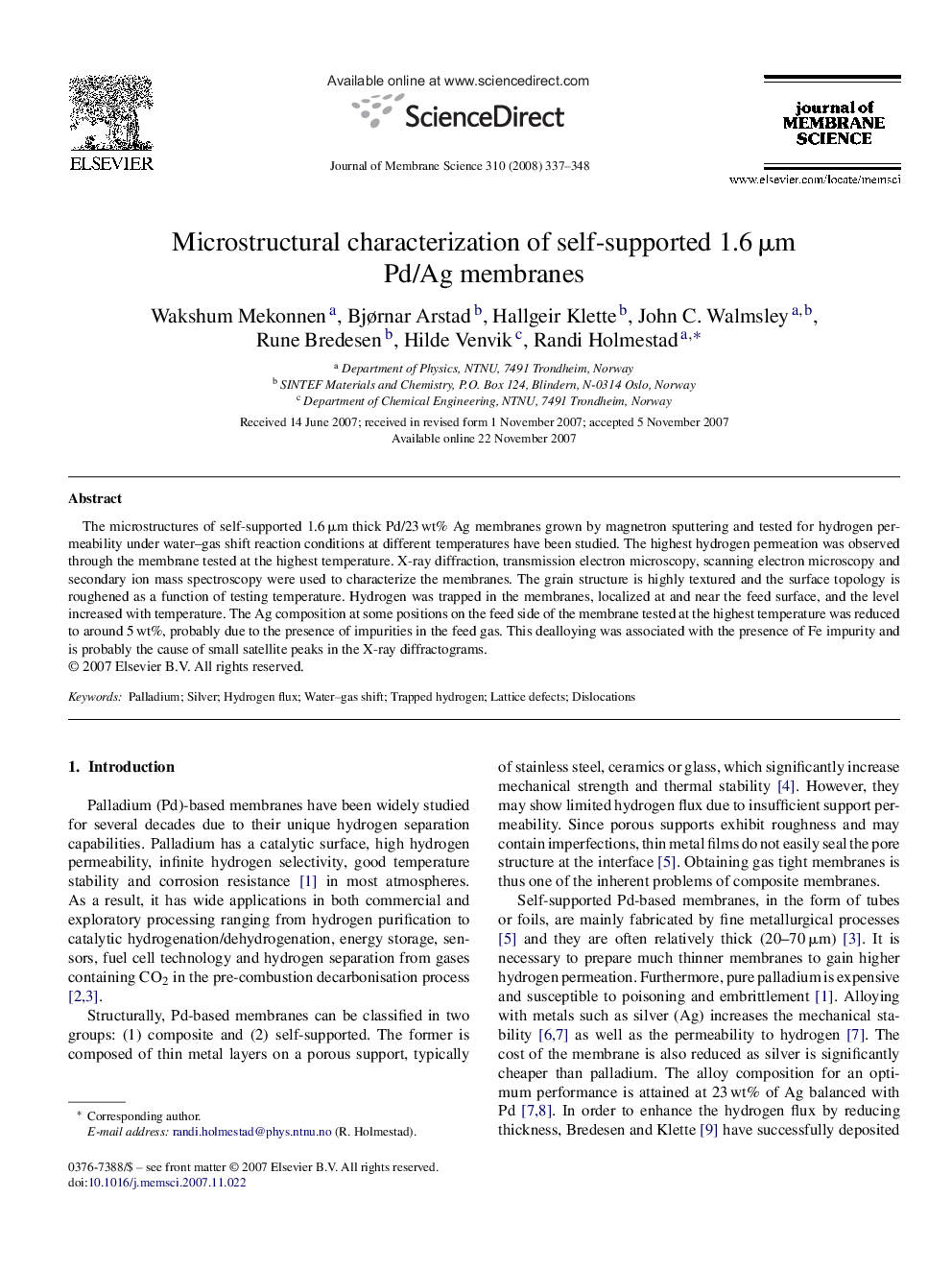| Article ID | Journal | Published Year | Pages | File Type |
|---|---|---|---|---|
| 638123 | Journal of Membrane Science | 2008 | 12 Pages |
The microstructures of self-supported 1.6 μm thick Pd/23 wt% Ag membranes grown by magnetron sputtering and tested for hydrogen permeability under water–gas shift reaction conditions at different temperatures have been studied. The highest hydrogen permeation was observed through the membrane tested at the highest temperature. X-ray diffraction, transmission electron microscopy, scanning electron microscopy and secondary ion mass spectroscopy were used to characterize the membranes. The grain structure is highly textured and the surface topology is roughened as a function of testing temperature. Hydrogen was trapped in the membranes, localized at and near the feed surface, and the level increased with temperature. The Ag composition at some positions on the feed side of the membrane tested at the highest temperature was reduced to around 5 wt%, probably due to the presence of impurities in the feed gas. This dealloying was associated with the presence of Fe impurity and is probably the cause of small satellite peaks in the X-ray diffractograms.
